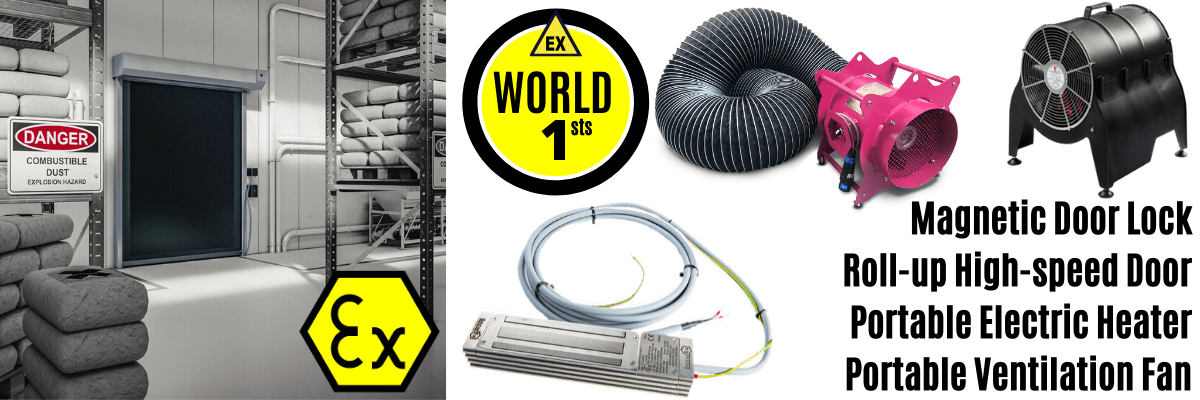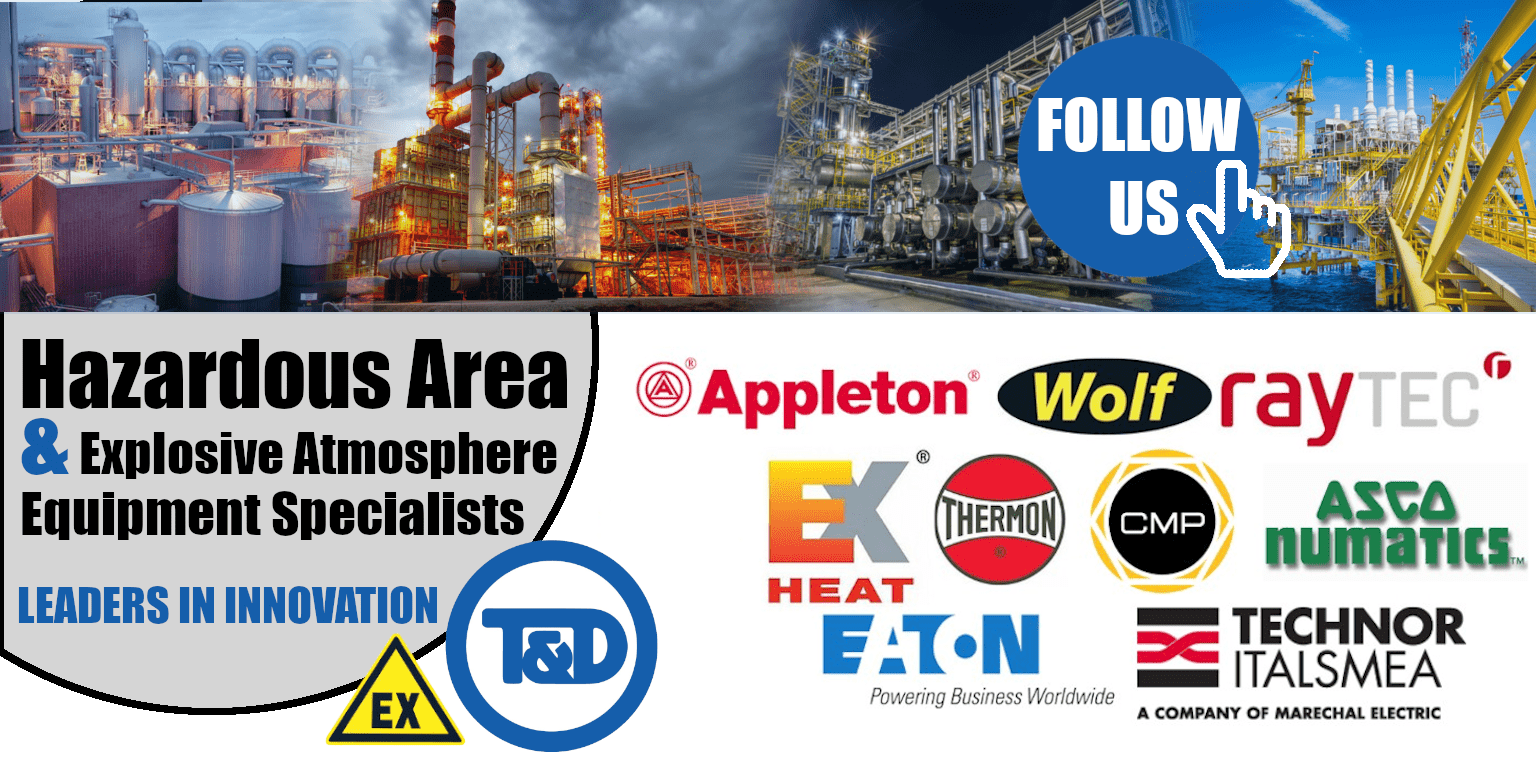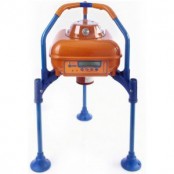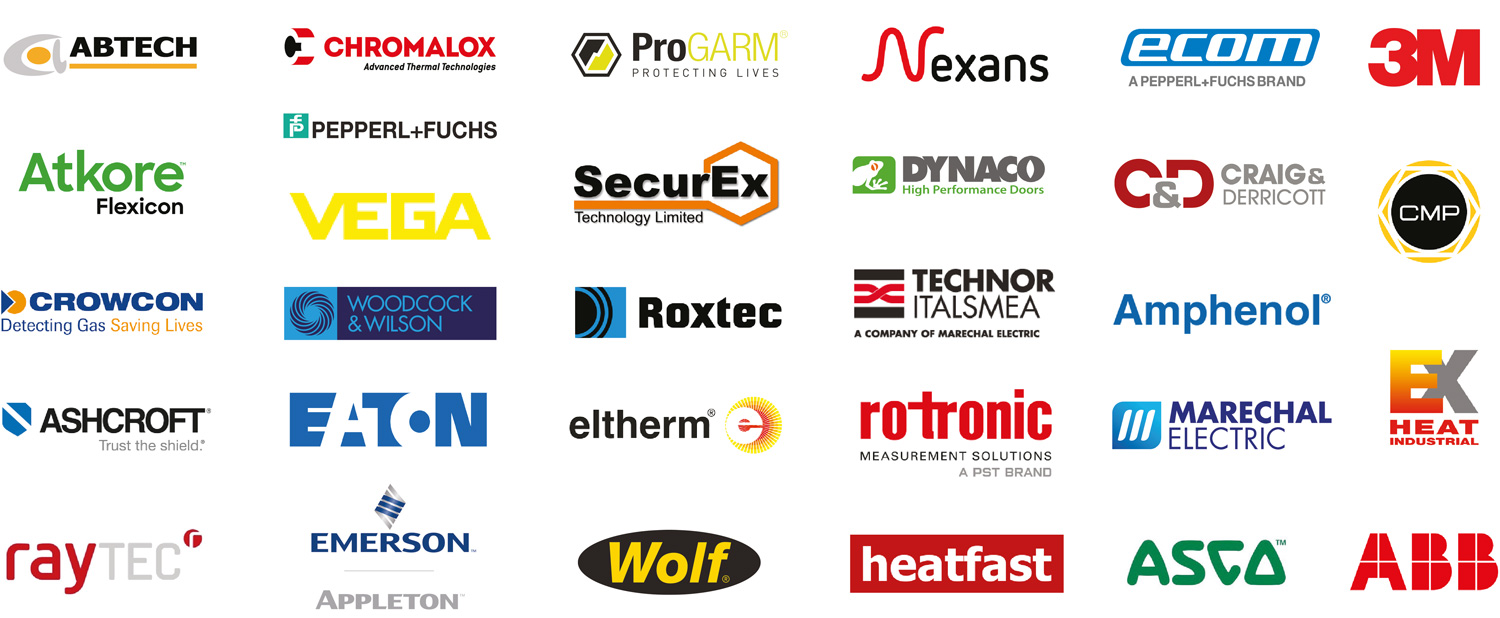Gas Detectors Fixed & Portable – FAQs Gas Detection Overview
Published 09 Jul 2019
- By Chris Dodds : estimated reading time 8 minutes


T&D Supply Gas Detection Equipment For The Monitoring Of Toxic & Flammable Gas Levels
Gas Detectors
Gas detectors, both fixed and portable, provide life saving alerts and notice of the presence of potentially fatal gases in working areas. Typically, a fixed gas detector is used as a permanent gas monitoring solution installed in a specific location such as a process area of a control or a plant room.
The area is continuously monitored measuring the concentration of a selection of gases within the air. Fixed gas detectors are used for the detection of flammable gases, toxic gases and for monitoring oxygen depletion levels.
Fixed gas detection uses the latest technology to ensure the safety of plant and personnel at all times. In the event of a gas concentration reaching a preset high level, fixed gas detectors have alarms, lights and indicators that act as a warning signal to alert the user of the gas risk hazard in both safe and hazardous area zone locations.
Portable gas detectors are, as their name suggests, portable and easy to carry around. They can be attached to clothing or overalls for continuous gas detection and monitoring when moving between zones and sites.
selecting the correct gas detector
As both fixed and portable gas detectors are available for many gases and applications, it is vital to ensure the correct product is specified. Prior to any gas detection equipment being specified, a full risk assessment must be carried out in order to determine the exact range of potential dangers and gas risk hazards that may be present.
When identifying the most suitable fixed gas detector for your application you must consider the following:
- The most suitable fixed gas detector to ensure quick and reliable operation
- If the fixed gas detector has any limitations (such as being affected by temperature, humidity or other gases in the environment)
- The location of the gas detector should still be accessible for maintenance and testing
- The sensor technology used mustn’t be affected by other substances in the surrounding environment e.g. catalytic bead sensors should not be used in areas where lead is present
- Accessories should be used so the fixed gas detector can operate suitably in the chosen environment e.g. spray deflectors should be used in wet areas
Know your site risks – Knowing the potential and existing risks can identify any potential hazards and prevent any incidents occurring. This is achieved through a risk assessment and if gas hazards are identified, gas detection is applicable as a risk reduction method.
Ask the right questions – Having identified the primary objective and the most likely gas, there are many key questions to ask which typically fall into one of 3 categories; the gases to be detected and where they come from, the location and environmental conditions and the ease of use for operators and routine servicing personnel.
Consider the environmental conditions – The performance, accuracy and reliability of any gas detector is dependent upon environmental conditions in which the gas monitor device will be operated in.
Temperature, pressure levels and humidity at the working location all have an affect on the performance of gas detection equipment and can also affect the decision of which detector should be used.
Understand product functionality – Product functionality and aspects like wiring configuration are important to consider, especially when retro-fitting into an existing application. If the gas detection equipment is to be integrated into a separate safety system, certain communication protocols may be required.
Gas monitoring of flammable gases, toxic gases & oxygen levels
Gas detectors are used in the following industries:
- Oil and gas industry where harmful by-products are created when processing oil and gas – hazardous area gas detectors are available.
- Offshore industry where the climate can be volatile and the fixed gas detector needs to be able to work effectively in harsh ambient conditions
- LNG industry where the risk of gas leakages that could lead to explosions is very high – Zone 1 & Zone 2 explosive atmospheres
- Pharmaceutical industry where monitoring oxygen depletion levels in confined spaces is crucial to the safety of the plant and personnel
- Petrochemical industry where petroleum and natural gases pose serious risks during production
Facilities within the oil and gas industry including gas compressors stations and buildings are often prone to high levels of gas exposure and leaks, spills emissions which if left undetected can damage entire facilities and halt production which can be extremely costly financially and reputationally.
Gas and flame detectors minimise these risks by providing comprehensive monitoring of equipment and work areas. Detectors should be installed overlooking compressors and pumps and detection is provided by the use of air particle and ultrasonic gas leak detection.
Efficient placement of gas detection sensors
Two of the most common questions regarding gas detection systems are “How many detectors do I require?” and “Where should I locate them?”. These are also two of the most difficult questions to answer as they are dependent upon the individual application.
Detectors should be mounted where the presence of gas is most likely with typical application locations including gas boilers, around pressurised storage tanks, cylinders and areas where leaks are likely to occur such as valves, gauges, flanges and filling/draining connections.
There are many considerations that should be taken into account when determining the location of a gas detector including:
- When detecting gases that are lighter or heavier than air, detectors should be mounted at either a high or lower location respectively.
- Consider how escaping gas may behave due to natural or forced air currents and if required, detectors should be mounted in ventilation ducts.
- When locating gas detectors, consider the potential damage that can be caused by natural events such as rain or flooding. For detectors that are installed outdoors, it is preferable to use a weather protection assembly.
- Consider process conditions when installing gas detection equipment. For example, butane and ammonia a typically heavier than air however if they are released from a process line at an elevated position then the gas can bypass the detector if it is placed in a low position.
- Ensure the structure to which the gas detector is installed is sturdy and not susceptible to vibration.
- Detectors should be installed at the designated location upside down. This will ensure that no dust or water will collect on the front of the sensor and stop the gas from entering the device.
- When installing open path infrared devices, it is important to ensure there is no permanent obscuration or blocking of the IR beam however short term blockages from vehicles, personnel or birds etc can be accommodated.

Portable & Fixed Gas Detection Solutions
Gas Detectors – Frequently Asked Questions
- What types of gas detectors are available?
Gas detectors are typically classified as either portable or fixed. Portable gas detectors are able to monitor gases present close to the user and can be easily connected to clothing or held in the user’s hand. For instance, Drager Pac 3500 is a compact, single-gas detector suitable for monitoring hydrogen sulphide, oxygen or carbon monoxide.
Fixed gas detectors are permanently installed in a certain area e.g plant room so they can continuously monitor the concentration of gases or vapours in the air – the Drager Polytron range of detectors provide gas monitoring for industrial and explosion-proof requirements in hazardous areas.
- How do gas detectors work?
Most portable and fixed gas detectors trigger lights, indicators or audible alarms to alert the user/users that the preset gas and vapour concentration has been exceeded. The user can then act quickly to rectify the problem or remove themselves from the situation potentially dangerous situation.
- Which gases can be detected?
Gas detection uses a number of different technologies to help classify the gas types. Gas detectors can identify flammable, toxic and combustible gases and can also be used to monitor oxygen levels and oxygen depletion.
Typical gases to be detected include methane, hydrogen sulphide, carbon dioxide, carbon monoxide, ethane and oxygen depletion.
- Which industries are gas detectors used in?
Both fixed and portable gas detectors can be used in a wide range of industries including the petrochemical, food and drink, manufacturing and oil and gas industry. Specific applications are dependent upon individual requirements, the level of gas present and the type of gas or gases that may present a risk.
- How is product battery life affected by outside temperature?
Product batteries are tested at room temperature however if this temperature drops significantly this can reduce battery life. Excessive heat can cause damage to the whole device and battery. Each detector is supplied with standard working temperature limitations.
- Can more than one gas be detected by a single detector ?
Yes, multi-gas detectors are available and can be configured to detect many gases. For instance, Drager Pac 7000 portable detector can monitor up to 14 single gases.
- What is the difference between LEL and UEL?
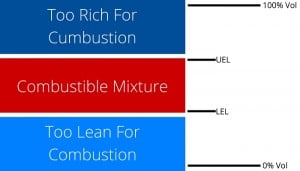
Gas Lower Explosion Limit And Upper Explosion Limit
The LEL of a gas is the lower explosion limit and this refers to minimum dilution of a gas that must be present for it to be detectable by a gas detector. The UEL is the upper explosion limit.
These limits are vital to the working of a gas detector as too little of a gas and the device will not be able to detect it, too much and the gas will also not be detectable. Each gas has its own LEL and UEL and these are typically shown by percent of total volume, with the balance as normal air.
More Reading
- Methane CH4 Gas Detection – See How Crowcon Detects CH4 Gas Levels
- Gas Detection In The Food Processing Industry Using Portable Gas Detectors
Flame, Heat, Gas Detectors & Detection Systems
![]()
Hazardous area industries including offshore oil/gas platforms and FPSOs, onshore oil refineries, processing plants, pipelines, storage farms and LPG/LNG plants all utilise or produce a wide range of hazardous flammable liquids and gases that can be detected using correctly specified flame and gas detectors.
Detecting toxic and flammable gases requires the detectors to be classified and certified according to the specific IECEx or ATEX standard – we distribute flame and fire detectors manufactured by Spectrex to operate in the harshest environmental conditions including self-contained stand-alone devices designed for direct connection to control and alarm systems or automatic fire extinguishing systems.
Our range of Hazardous Area Fire & Gas Detection System products also includes Explosion Proof Warning Systems & Hazardous Area Lighting – comprehensive range of intrinsically safe, flameproof and explosion proof alarm sounders, sirens, bells and horns, loudspeakers and beacons.
♦ LV Power Products | Junction Boxes & Enclosures ATEX | Plugs ATEX | Control Stations ATEX | Isolators ATEX

Thorne & Derrick | Detecting Flame | Heat | Gas
Experts in Equipment
for Explosive Atmospheres
FOLLOW US
Follow our Showcase Page on LinkedIn to receive hazardous area product innovations, industry news, whitepapers, videos, technical tips and training webinars for professionals involved in the explosive atmosphere industries.

